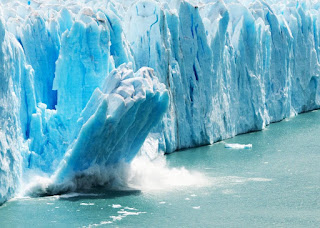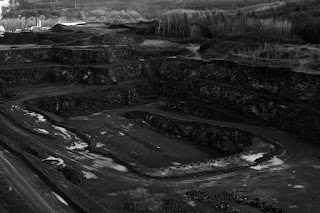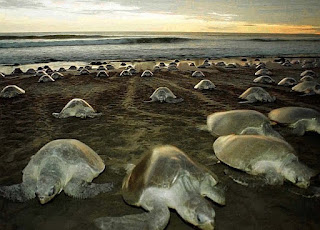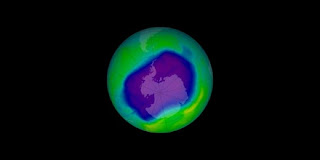Other side of the coin- The Coronavirus
As we all know that from last few months our world has been transformed. Thousands of people have died and thousands more are still infected from coronavirus. The invisible virus was unknown before appearing in the city of Wuhan in China in Dec 19. The pandemic has brought widespread job losses and threatened the livelihoods of millions of businesses. Economic activity has come to a standstill and the stock markets have declined. But if we see on the other side of coin Coronavirus have positive effects on our environment. As people across the globe stay home to stop the spread of the new coronavirus the air is becoming cleaner, water is cleaner and animals are growing bold. The pandemic is turning the nature upside down.
Some major effects of Coronavirus on environment are discussed below :
Air pollution :
One of the main impact of coronavirus outbreak has been a significant drop in air pollution. The worldwide emission of carbon dioxide has decreased by up to 17 percent in the last month due to the lockdown imposed to prevent Coronavirus from spreading. However, scientists say that when life is normal, this short-term reduction in pollution in terms of climate change will be 'like a drop in the ocean'. In the study of carbon dioxide emissions during the epidemic, the team of scientists assessed that pollution levels were decreasing. In many parts of the world mostly seen developed and developing nations like China, India and Europe. The air pollution drops 25% in China, 46% in Paris, 38% in Sydney, 9% in Durban,SA, 29% in LA, 26% in Rio de Janerio and 30% in Delhi. Cleaner air means stronger lungs for people with asthma especially children.
 |
| Pure air in New Delhi |
Himalayas are visible from many parts of India for the first time in decades. On 3rd April residents in Jalandhar, Punjab in North India woke up to a view not seen for decades snow capped Himalayan peak more than 100 miles away.
 |
| Himalays are visible due to reduced air pollution from Jalandhar, Punjab |
The greenhouse gases that trap heat and cause climate change stay in the atmosphere for 100 years or more, so the pandemic shutdown is unlikely to effect global warming.
 |
| Large Icebergs melting due to global warming |
Reduced coal use :
Yet another impact on environment as a consequence of coronavirus is marked in coal consumption, factories are shuttered and coal use fell by 40% in China's 6 largest power plants since last quarter of 2019. Not only coal other fossil fuels use are also reduced due to this pandemic which plays a huge role in decreasing air pollution.
 |
| Coal consumption reduced |
Domestic energy is rising but commercial use is falling further which leads to overall reducing emission.
 |
| Energy use reduce on commercial places due to lockdown |
Ganga's water becomes drinkable-
Campaigns have been carried out for the past several years to clean the river Ganga, NGOs and government organizations have failed to establish in 34 years since the launch of the Ganga Action Plan in 1986 but even after many attempts, the Ganga has not been cleared. But during the lockdown, the chemical Ganga associated with the closure of the factories of Varanasi and dyeing of saris did not fall, which made the river water clean. Even in Haridwar, the water of the Ganges was no longer suitable for drinking. But these days the water of 'Har Ki Pauri' in Haridwar has become drinkable. According to environmental scientists, due to the stoppage of industrial pollutants and waste falling into the Ganga, a significant improvement is seen in the Ganga's water these days. Ganga water has been able to be clean after several decades. The water quality of this river was tested at many places and found to be drinkable. In Haridwar, there has been a 34 percent decrease in coliform bacteria found in faeces. For the first time after the formation of Uttarakhand, the quality of Ganga water has been kept in class A. The quality of Ganga water has also improved in Uttar Pradesh. There should be at least 7 mg per liter of dissolved oxygen level in clean water. These days the dissolved oxygen level in the upstream of this river is 8.9 mg per liter, while in its flow it is 8.3 mg per liter. Someday it even reached 11 and 12. Not only this, the color of the Ganga has also shown such improvement after 50 years. This level of oxygen shows that the quality of the Ganga river has improved.
 |
| Ganga water is clean after 50 years |
Because of the lockdown, water pollution has come down to an astonishing level and this must have possibly prompted 7 species of fish returned to the river even Gangetic dolphins or South Asian River Dolphins spotted at Kolkata ghats after 30 years!
 |
| Gangetic Dolphins are seen again in Ganga after a long time |
Noise pollution reduced :
As you know approx. 3 billion people are lockdown in their houses which is half of all the population of earth to stop the spread of deadly coronavirus. There is peace around due to closure of vehicles, loudspeakers, aeroplanes and factories. That is why there has been a huge reduction in noise pollution in all places just like air and water pollution. This is happening years later when the residents of Delhi wake up due to the chirping of birds. On normal days, the limit of decibel level for residential area is fixed at 55 decibels (A) during the day and 45 decibels at night. It is believed that these days, this figure can be between 30 and 40 decibels. Experts say that birds chirp is between 40 and 50 decibels and we hear them only when the surrounding noise is less than the birds chirp. As it is happening nowadays.
 |
| Planes parked at airports |
Growing Wildlife :
There is no one to disturb wild animals so they get the courage to roam anywhere they want. A Puma roamed the street of Santiago,Chile.
 |
| Puma roaming on street of Santiago,Chile |
Kangaroo are seen in Australia roaming freely in urban areas as Coronavirus lockdowns continue around the world.
 |
| Kangaroo in Australia during lockdown |
India going into lockdown along the coast of the Eastern state of Odisha over 4,75,000 endangered Olive Ridley sea turtles have come ashore to dig their nests and lay eggs. Leatherback sea turtles are among several species that are enjoying extra space by humans.
 |
| Olive Ridley sea turtles are back for mass nesting on the sandy Gahirmatha beach in Odisha |
The water canals of Venice, Italy are clean once again Dolphins and Swans are seen there after a long time.
 |
| Swans are back in their native place in Venice, Italy |
 |
| Dolphines are seen in the water of Venice once again |
•Aerosol pollution that does not remain airborne for long is also falling. But aerosols cool the planet, so NASA climate scientists are investigating whether falling levels may be warming local temperatures for now. Aerosols are the main reasons behind Ozone depletion of Earth.
 |
| Ozone depletion at Polar caps |
Conclusion :





















2 Comments
🌠🌠🌠🌠💯💯🆒🆒🆒
ReplyDelete😄
DeletePlease don't enter any spam link in the comment box.